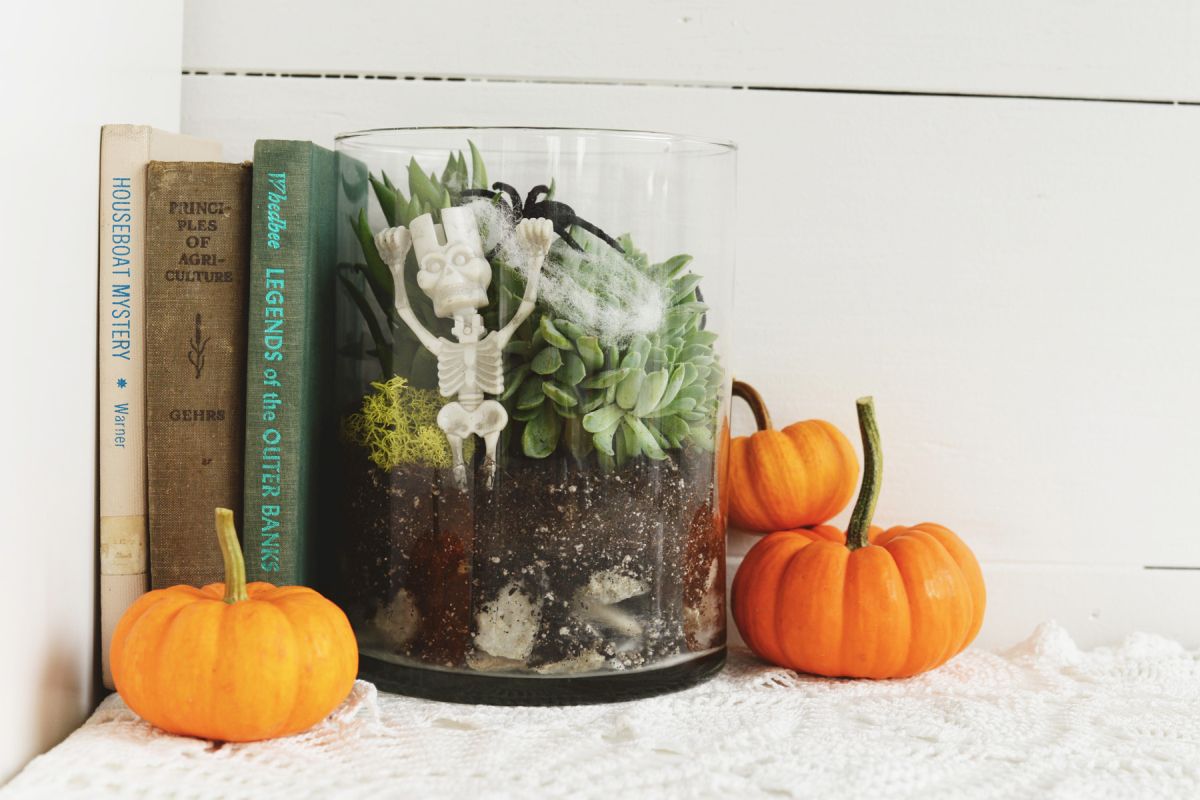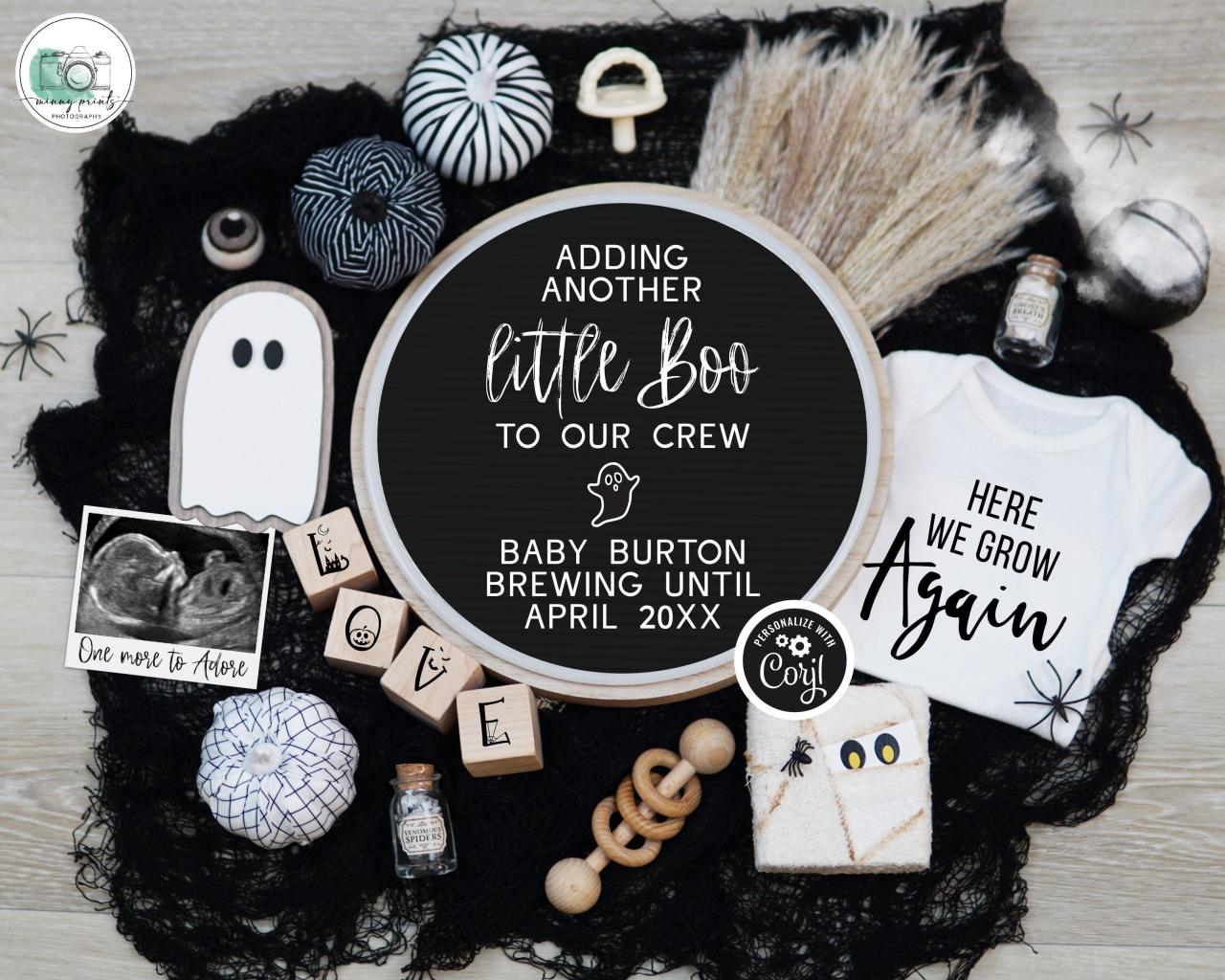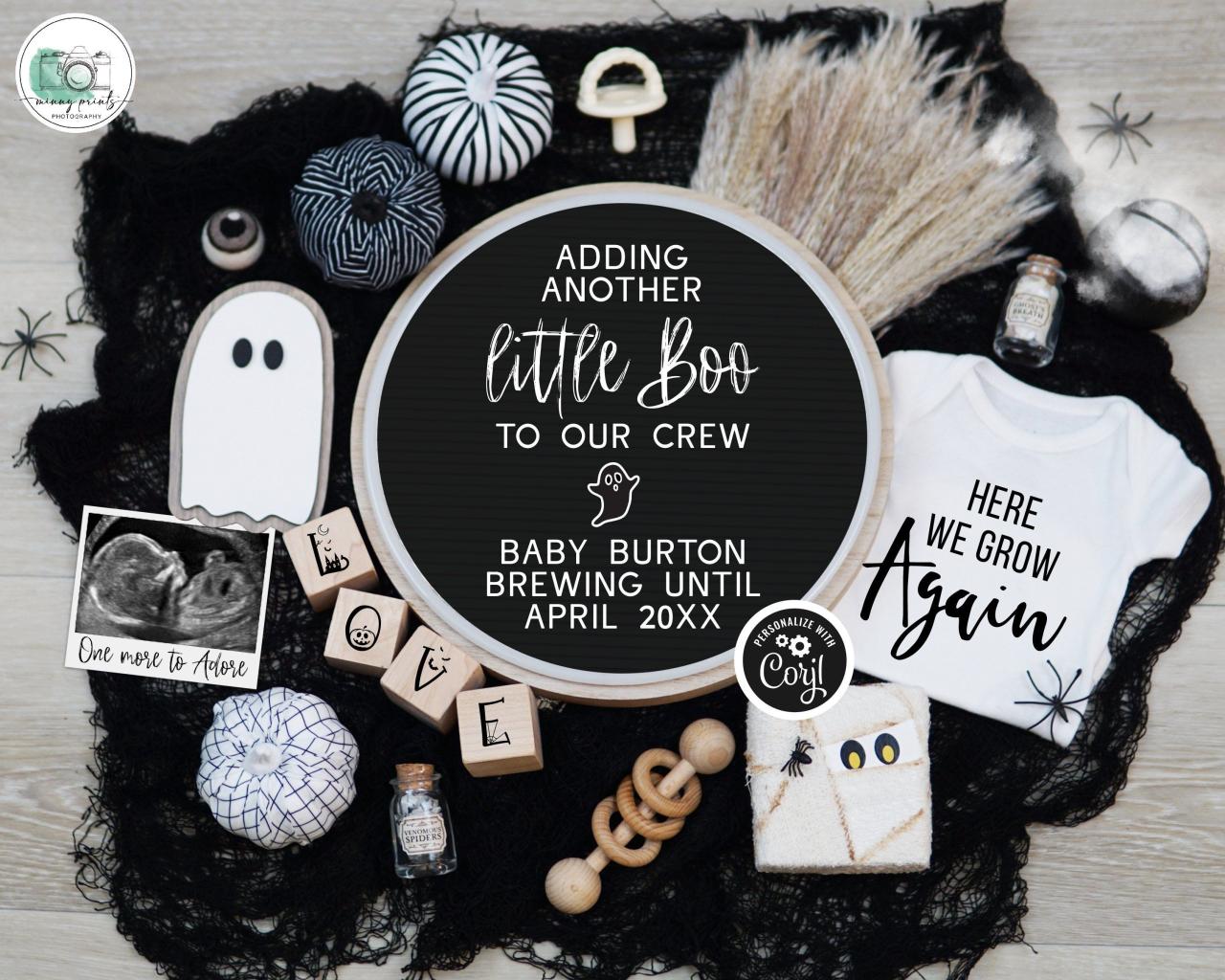How to Grow Spooky Halloween Houseplants in a Terrarium: Transform your home into a gothic garden with this guide to creating a spooky, enchanting terrarium filled with eerie plants. Embrace the spirit of Halloween with these fascinating and unique houseplants, and discover the captivating world of terrarium gardening.
Beyond the aesthetic appeal, growing plants in terrariums offers a range of benefits. Terrariums provide a controlled environment that promotes healthy growth, reduces the need for frequent watering, and adds a touch of nature to any space. Whether you’re a seasoned gardener or a curious beginner, creating a spooky Halloween terrarium is a fun and rewarding project that allows you to express your creativity and celebrate the season.
Introduction

Halloween is a time for spooky decorations, costumes, and, of course, spooky plants. While traditional Halloween decorations like pumpkins and bats are always popular, there’s a growing trend toward incorporating living plants into the festivities. Spooky houseplants, with their unique shapes, textures, and even potentially unsettling names, add a touch of eerie charm to any Halloween display.Growing plants in terrariums offers several benefits, making them a perfect choice for spooky Halloween creations.
Terrariums provide a self-contained environment that requires minimal maintenance, making them ideal for busy schedules. They also offer a unique and visually appealing way to display plants, allowing for creative arrangements and spooky embellishments.This guide will walk you through the steps involved in creating a spooky Halloween terrarium, from selecting the right plants to adding the finishing touches.
You’ll learn about the essential components of a terrarium, how to choose spooky plants, and how to decorate your terrarium for a truly frightening effect.
Choosing Spooky Plants, How to Grow Spooky Halloween Houseplants in a Terrarium
The first step in creating a spooky Halloween terrarium is selecting plants that evoke a sense of mystery and intrigue. There are numerous plants that lend themselves well to a spooky theme, with their unusual shapes, textures, or names adding to the eerie atmosphere.
- Black Mondo Grass (Ophiopogon planiscapus ‘Nigrescens’): This striking grass features jet-black leaves, adding a dramatic and almost otherworldly touch to any terrarium. Its dark color evokes a sense of mystery and shadows, perfectly fitting the spooky Halloween theme.
- Venus Flytrap (Dionaea muscipula): The Venus Flytrap, with its carnivorous nature and menacing-looking traps, is a natural choice for a spooky terrarium. It’s a fascinating and intriguing plant that will surely capture the attention of anyone who sees it.
- Skeleton Plant (Graptopetalum paraguayense): This succulent, with its skeletal-looking leaves, adds a macabre touch to any terrarium. Its unique appearance evokes a sense of decay and mystery, making it a perfect choice for a spooky display.
- Spider Plant (Chlorophytum comosum): While not inherently spooky, the Spider Plant’s long, trailing leaves, reminiscent of spider legs, can be arranged to create a spooky effect. The plant’s common name further adds to its eerie appeal.
- Succulents:Various succulents, with their fleshy leaves and unique shapes, can be used to create spooky silhouettes or represent eerie landscapes within the terrarium. Consider using succulents like Echeveria, Sedum, or Haworthia, which can be shaped and arranged to evoke a sense of otherworldly beauty.
Choosing the Right Plants

Creating a spooky Halloween terrarium requires selecting plants that evoke a sense of mystery and intrigue. The key is to choose plants with dark foliage, unusual shapes, and names that conjure up images of haunted forests and eerie landscapes.
Plant Selection Criteria
When choosing plants for your spooky terrarium, consider factors such as terrarium size, light requirements, and humidity tolerance.
- Terrarium Size:Choose plants that will fit comfortably within the terrarium, leaving enough space for air circulation. Smaller plants are ideal for smaller terrariums.
- Light Requirements:Select plants that thrive in low to moderate light conditions, as terrariums often receive limited sunlight.
- Humidity Tolerance:Terrariums create a humid environment, so select plants that can tolerate high humidity levels.
Spooky Plant Examples
Here are some examples of plants that are perfect for a spooky Halloween terrarium:
Dark Foliage
- Black Mondo Grass (Ophiopogon planiscapus ‘Nigrescens’): This striking grass features deep black leaves that create a dramatic contrast against other plants. Its name, “mondo,” evokes a sense of mystery and intrigue.
- Purple Shamrock (Oxalis triangularis): With its dark purple, clover-shaped leaves, this plant adds a touch of elegance and a hint of the macabre to your terrarium.
- Black River Fern (Asplenium nidus ‘Black River’): This fern boasts dark green, almost black, fronds that create a sense of depth and shadow within the terrarium.
Unusual Shapes
- Venus Flytrap (Dionaea muscipula): This carnivorous plant with its jaw-like traps adds a touch of horror to any terrarium. Its unique appearance and predatory nature make it a fascinating and spooky addition.
- Succulent with “Skeleton” Leaves:Certain succulent varieties, like the Haworthiaspecies, have translucent leaves that appear skeletal, adding a ghostly touch to the terrarium.
- Air Plants (Tillandsia): These plants, with their unusual shapes and ability to grow without soil, can be arranged to create eerie and captivating displays.
Spooky Names
- Dragon Tree (Dracaena marginata): This plant with its spiky, dragon-like leaves evokes a sense of mythical creatures and ancient lore.
- Witches’ Broom (Broom): This plant, with its tangled, twisted branches, conjures up images of witches’ brews and dark magic.
- Ghost Plant (Graptopetalum paraguayense): This succulent with its pale, ghostly leaves adds a haunting touch to the terrarium.
Assembling the Terrarium: How To Grow Spooky Halloween Houseplants In A Terrarium
Once you’ve chosen your spooky plants, it’s time to assemble your Halloween terrarium. This is where you get to unleash your creativity and bring your spooky vision to life.
Materials
The materials you need will depend on the size and complexity of your terrarium, but here’s a general list:
- Terrarium Container:A glass container with a wide mouth and a lid is ideal for a terrarium. Look for a container that is large enough to accommodate your chosen plants and decorations.
- Potting Mix:Use a well-draining potting mix designed for terrariums or succulents.
- Drainage Material:Small pebbles, gravel, or crushed rocks will help to prevent waterlogging.
- Decorative Elements:These can include Halloween-themed figurines, moss, twigs, stones, and other elements that add a spooky touch.
- Tools:You’ll need a small trowel or spoon for planting, tweezers for placing decorations, and a watering can with a fine rose for watering.
Layering the Terrarium
The layering process is crucial for creating a healthy and visually appealing terrarium. Follow these steps:
- Drainage Layer:Start by adding a layer of drainage material (pebbles, gravel, or crushed rocks) to the bottom of the terrarium container. This layer should be about 1-2 inches deep. This layer helps to prevent water from accumulating at the base of the terrarium, which can lead to root rot.
- Potting Mix Layer:Next, add a layer of potting mix on top of the drainage material. This layer should be about 2-3 inches deep. This layer provides the plants with the necessary nutrients and moisture to thrive.
- Planting:Carefully plant your spooky plants into the potting mix, leaving some space between them. Make sure the plants are positioned in a way that allows them to grow and flourish. Ensure that the plants are not overcrowded, and there is adequate space for air circulation.
- Decorative Elements:Finally, add your decorative elements. Place them strategically to enhance the spooky ambiance of your terrarium. This is where you can let your creativity shine. You can create a graveyard scene with miniature tombstones, a spooky forest with moss-covered branches, or a haunted house with tiny figurines.
Maintaining the Terrarium
A spooky Halloween terrarium requires a bit of care to keep your creepy crawlies thriving. While low-maintenance, these miniature ecosystems need attention to thrive.
Watering
Watering is crucial to maintain the right humidity levels for your spooky houseplants. Overwatering can lead to root rot, while underwatering can cause wilting.
- Assess moisture levels: Before watering, check the soil moisture. If the top inch of soil feels dry, it’s time to water.
- Water thoroughly: When you do water, pour enough water to moisten the entire soil, allowing excess water to drain out the bottom.
- Frequency: The frequency of watering depends on the specific plants in your terrarium and the environmental conditions. During warmer months, you may need to water more frequently than in colder months.
Fertilizing
Fertilizing your spooky houseplants is important for their growth and health.
- Use diluted fertilizer: Use a balanced liquid fertilizer diluted to half strength.
- Apply sparingly: Fertilize only once a month during the growing season (spring and summer).
- Avoid overfertilizing: Too much fertilizer can burn the roots of your plants.
Monitoring the Terrarium Environment
Monitoring the environment is vital for the well-being of your spooky houseplants.
- Temperature: The ideal temperature for most spooky houseplants is between 65-75 degrees Fahrenheit (18-24 degrees Celsius).
- Humidity: Spooky houseplants thrive in humid environments. You can increase humidity by misting the plants regularly or placing a shallow dish of water near the terrarium.
- Light: Most spooky houseplants prefer bright, indirect light. Avoid placing the terrarium in direct sunlight, as this can overheat the plants.
Common Issues
While spooky houseplants are relatively easy to care for, certain issues may arise.
- Overwatering: Overwatering is the most common issue in terrariums. Signs of overwatering include yellowing leaves, wilting, and root rot. To prevent overwatering, allow the soil to dry out between waterings.
- Pests: Pests such as aphids, mealybugs, and spider mites can infest terrariums.
To prevent pests, inspect your plants regularly for signs of infestation.
- Fungal Growth: Fungal growth can occur in humid environments. To prevent fungal growth, ensure good air circulation within the terrarium.
Troubleshooting
If you notice any issues with your spooky houseplants, there are several troubleshooting steps you can take.
Creating a spooky Halloween terrarium is a fun and engaging way to add a touch of the macabre to your home decor. While many plants can contribute to a spooky atmosphere, carnivorous plants like Venus flytraps and pitcher plants offer a unique and captivating element.
For inspiration on which carnivorous plants to incorporate into your terrarium, check out The Best Carnivorous Plants to Display for Halloween. Once you’ve chosen your plants, you can create a miniature, eerie ecosystem within your terrarium, complete with moss, rocks, and even miniature skeletons for an extra spooky touch.
- Adjust watering: If your plants are wilting, increase the frequency of watering. If your plants are yellowing, reduce the frequency of watering.
- Control pests: If you notice pests, you can use a mild insecticidal soap or neem oil to treat the infestation.
Creating a spooky Halloween terrarium is a fun way to add some eerie ambiance to your home. To ensure your plants thrive in this enclosed environment, it’s best to choose species that are low-maintenance and thrive in humid conditions.
You can find a list of the Easiest Halloween Houseplants to Care for During the Fall for inspiration, and then select the ones that best suit your terrarium’s size and aesthetic. Remember to research the specific care requirements of each plant to ensure they thrive in your spooky terrarium.
- Improve air circulation: If you notice fungal growth, improve air circulation by opening the terrarium lid for a few hours each day.
Decorating the Terrarium

Transforming your terrarium into a spooky Halloween haven involves a careful selection of decorations that enhance the eerie ambiance without compromising the well-being of your plants. The key is to create a visually captivating scene while maintaining a safe and conducive environment for your botanical inhabitants.
Decorative Options for a Spooky Terrarium
Decorative elements can be broadly categorized into three main groups: miniature figurines, glow-in-the-dark elements, and eerie lighting. These elements work together to create a truly haunting and captivating Halloween display.
- Miniature Halloween Figurines:These tiny figures can add a touch of whimsy and spookiness to your terrarium. Popular choices include miniature ghosts, bats, witches, pumpkins, and even tiny skeletons. These figurines can be placed strategically throughout the terrarium to create a sense of depth and intrigue.
For instance, a small ghost perched on a moss-covered rock or a miniature witch casting a spell over a spider plant can create a truly enchanting scene.
- Glow-in-the-Dark Elements:Incorporating glow-in-the-dark elements adds a touch of magic and mystery to your terrarium, especially when the lights are dimmed. Consider using glow-in-the-dark paint to decorate small rocks or pebbles, or opt for miniature glow-in-the-dark figurines. These elements can be strategically placed to create a captivating and eerie glow within the terrarium.
- Eerie Lighting:The right lighting can make all the difference in setting the mood for your spooky terrarium. Consider using LED tea lights or battery-operated fairy lights with a warm, amber glow to create a truly haunting atmosphere. These lights can be placed strategically around the terrarium, illuminating the decorative elements and casting intriguing shadows that enhance the overall spooky ambiance.
Placement Suggestions for Spooky Decorations
The placement of decorations is crucial in creating a visually appealing and cohesive spooky scene within your terrarium.
Decorative Element |
Characteristics |
Placement Suggestions |
|---|---|---|
Miniature Ghost Figurine |
White, translucent, and ethereal |
Perched on a moss-covered rock, hovering above a spider plant, or nestled amidst ferns |
Glow-in-the-Dark Spider Web |
Emits a soft, eerie glow in the dark |
Spun across the top of the terrarium or draped over a rock or branch |
Miniature Witch Figurine |
Clad in black robes, holding a miniature cauldron |
Positioned near the base of the terrarium, casting a spell over a spider plant |
LED Tea Lights |
Emit a warm, amber glow |
Placed strategically around the terrarium to illuminate the decorative elements and cast intriguing shadows |
Inspiring Examples
To spark your creativity, let’s explore some spooky Halloween terrarium designs. These examples showcase the diverse possibilities and aesthetic appeal of these miniature ecosystems.
Spooky Terrarium Styles
Each terrarium style brings a unique ambiance to your Halloween decor. Let’s explore some of the most popular styles.
Style |
Description |
Image Description |
|---|---|---|
Gothic |
This style emphasizes dark and mysterious elements. It features plants with dark foliage and dramatic silhouettes, like black mondo grass or black mondo grass. A skull-shaped rock or a small black raven figurine adds to the eerie atmosphere. The terrarium is typically enclosed in a glass container with a dark, distressed finish. |
A dark, glass terrarium with a distressed finish. Black mondo grass and a small black raven figurine are placed inside. The soil is covered with black pebbles, and the overall atmosphere is dark and mysterious. |
Whimsical |
This style is playful and fun. It features colorful plants, like pink polka dot plant or purple shamrock, and whimsical decorations, like miniature pumpkins, ghosts, and bats. The terrarium can be housed in a clear glass container with a playful design. |
A clear glass terrarium with a playful design. Pink polka dot plant and purple shamrock are planted in the terrarium. Miniature pumpkins, ghosts, and bats are scattered throughout the terrarium. The overall atmosphere is playful and fun. |
Classic Halloween |
This style is traditional and festive. It features plants with orange and yellow foliage, like creeping jenny or orange spider plant. The terrarium is decorated with classic Halloween symbols, like pumpkins, witches, and black cats. It can be housed in a clear glass container with a festive design. |
A clear glass terrarium with a festive design. Creeping jenny and orange spider plant are planted in the terrarium. Miniature pumpkins, witches, and black cats are scattered throughout the terrarium. The overall atmosphere is traditional and festive. |
Wrap-Up
From selecting the right plants to decorating your terrarium with spooky accents, this guide has provided you with the tools to create a captivating and unique centerpiece for your Halloween celebrations. Embrace the macabre and let your imagination run wild as you craft a miniature world of eerie beauty.
Remember, with a little creativity and care, your spooky Halloween terrarium will become a conversation starter and a testament to your gardening prowess.
Question Bank
What are some good beginner-friendly spooky plants for a terrarium?
Some beginner-friendly spooky plants for a terrarium include:
– Black Mondo Grass:Its dark foliage creates a striking contrast and adds a touch of mystery.
– Purple Shamrock:This plant features vibrant purple leaves that evoke a spooky atmosphere.
– Venus Flytrap:This carnivorous plant is known for its unique traps and can add a touch of horror to your terrarium.
– Moth Orchid:Its delicate flowers resemble fluttering moths, creating a haunting and beautiful element.
How often should I water my spooky Halloween terrarium?
The frequency of watering depends on the specific plants in your terrarium and the ambient humidity. However, a general rule of thumb is to water only when the soil feels dry to the touch. Avoid overwatering, as this can lead to root rot and other problems.
What kind of lighting is best for a spooky Halloween terrarium?
Most spooky Halloween terrarium plants thrive in bright, indirect light. Avoid placing your terrarium in direct sunlight, as this can scorch the leaves. You can use a grow light if natural light is limited.
